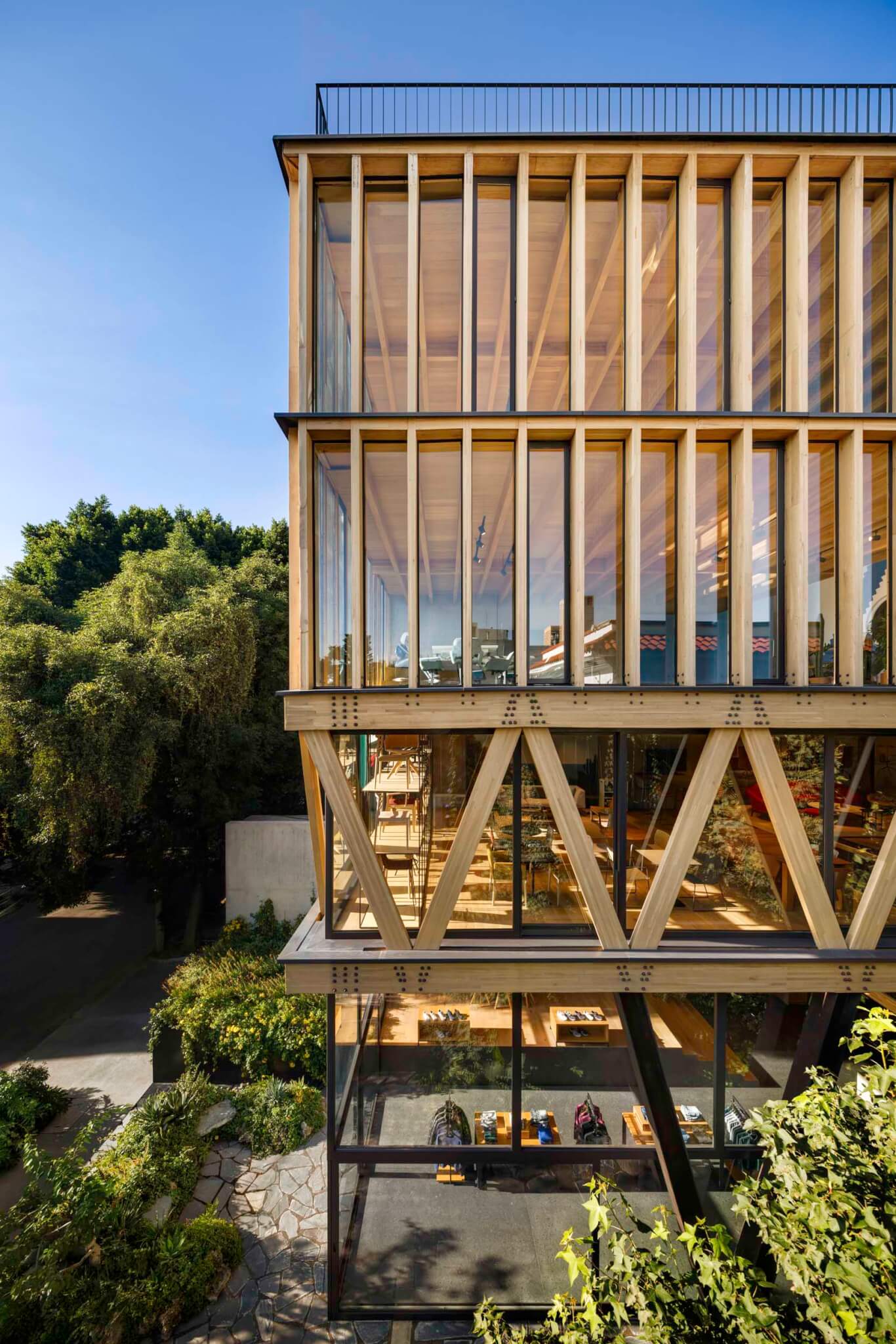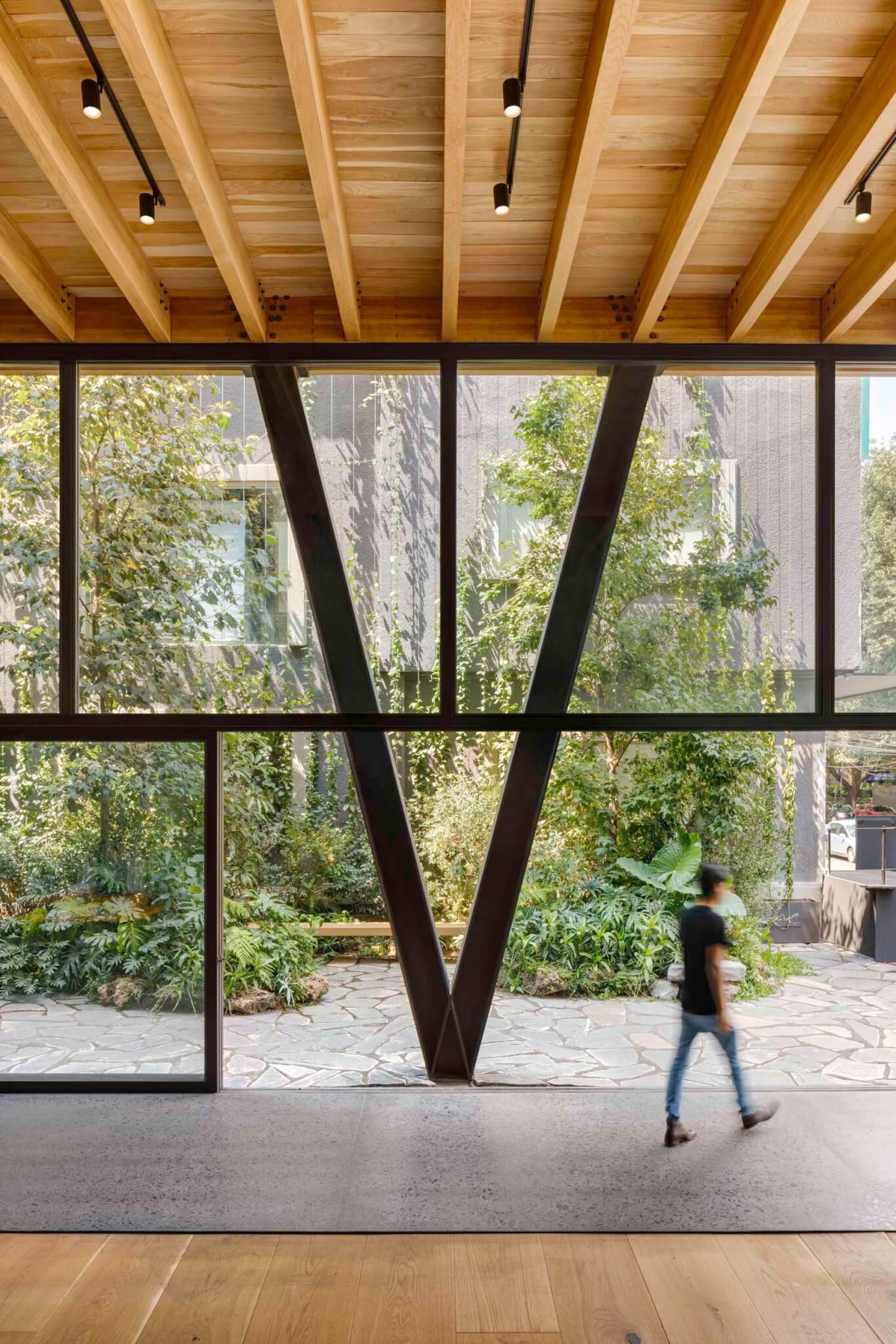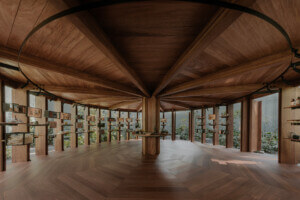Oak timber and steel. These two materials make up the impressive exoskeleton at El Jardín Anatole, a 10,100-square-foot mixed-use building in Mexico City by Dellekamp + Schleich (DAFdf), a Mexico City firm founded by Derek Dellekamp and Jachen Schleich. A case study in cross laminated timber (CLT) design and its potential for seismic areas, El Jardín Anatole is a materially honest building that sources ecologically friendly materials to create high-quality public space in a residential neighborhood.


To date, El Jardín Anatole holds the title of the largest mass timber building in Mexico (not a small feat for a country of 126.2 million people). CLT is popular because its strength-to-weight ratio is comparable to concrete, but the material is five times lighter and has much lower carbon storage. (Scientists found that building hybrid CLT structures can yield an average of 26.5 percent reduction in global warming compared to concrete construction.) At El Jardín Anatole, Dellekamp + Schleich used concrete sparingly: Only its elevator cores and stairwells use the building material that energy codes are slowly phasing out.

Aside from its ecological merits, CLT also performs extremely well in earthquake-prone places. A study this summer in California found that high-rise timber structures can survive 7.7 magnitude earthquakes and return back to stasis within minutes—without damage. This made CLT an obvious choice for El Jardín Anatole, built on a site that sees on average 74 earthquakes a year, thanks to how well it performs in tension. The oak timber project builds on DAFdf’s track record of seismic-resistant design that doesn’t compromise on aesthetics. In 2021, DAFdf completed Señor de Tula Sanctuary, an earthquake-resistant chapel fifty miles south of Mexico City in Jojutla, Mexico.


“El Jardín Anatole arises from a residual void in Mexico City with potential for density, where the courtyard of a house with historical value was converted into a mixed-use building,” Dellekamp + Schleich said. “Due to the added value of the area, few properties have areas free of construction, so one of the premises of the design was to blur the limits between the public and private, creating a public space for connection with the city.”
Project Specifications
-
- Architects: Dellekamp + Schleich
- Civil engineer: Cimera, Héctor Anselmo, B+L Arq & Design, José Luis bonilla Resendiz, Mayra Susana Monroy Hernández, Vigalam
- Structural engineer: Óscar Trejo, Sergio López
- Landscape: Hugo Sanchez Paisaje, Carla Hernández
- Lighting: Lightchitects, Carlos Hano











